For those of you who do not use Facebook, an update on recent events:
Since registering the Hangar Thirteen Foundation as a 501c3 nonprofit in 2018 and formally beginning our online presence, we generally posted updates on Facebook more often than the website. The reason being was twofold. First, longer updates on Facebook generally appear small on the website. Second, Facebook allows for greater interaction with our supporters, granting us an audience that might otherwise never know we existed. For this reason, the typical practice was to post updates on our Facebook page on a semi-weekly basis, and after a couple months or so, gather them up to make an Odds & Ends post here. Supporters were encouraged to visit the website for primary sources on the Library page, potential needs for the project on the various Parts Drives, and long form articles posted alongside the Updates.
Unfortunately, Facebook saw fit to blacklist our page this year. In fact, they did it right in the middle of the most important time for us: the anniversary of Lucky Thirteen‘s combat operations. The quoted reason was that we had ‘violated community standards.’ It seems clear to us that this action was decided by an algorithm as the exact standard which we violated has STILL not been revealed. Going through the tiring process of Meta’s customer service, it seems that they have little idea as to why either. It is a frustrating situation, asking for help only to get single word answers to questions you did not ask.
The worst part was that, three months before the blacklisting, the Hangar Thirteen Foundation qualified for monetization. Since 2018, we gathered over 11,000 followers, without once paying for any Facebook support in advertisement. Said monetization was not much, averaging 10 bucks a month, but it was a welcome sign of our progress. So, you can understand when I say that ‘frustration’ does not begin to cover it. After 90 days, we decided to start a new page and begin all over again. This time, however, we are changing the way we do things.
Since we do not know exactly what it was that Facebook took issue with, the safe thing is to avoid posting material on Facebook as much as possible. Instead, future updates will be posted on the website and Facebook visitors will simply be encouraged to visit here. This is not necessarily preferable as, in general, Facebook visitors rarely follow posted links. But it seems to me that this is the way forward, since social media has shown itself to be entirely unreliable.
For our first update using the new format, I wanted to share a couple interesting stories.
Early in the year we took up the task of recreating the Boeing B-17’s life raft ejection handles. These were needed by the Desert Rat (41-2595) restoration team, and since Lucky Thirteen (42-3455) would need them as well, we decided to go ahead and tackle the problem.
The standard B-17 carried a pair of five man life rafts in a pair of cubbies above the bomb bay. The doors covering these cubbies were spring-loaded, being released by a pair of T-handles in the roof of the radio compartment. An original bracket, complete with T-handles and sockets, was loaned to us by the Piccadilly Lilly II (44-83684) team with the Planes of Fame Museum in Chino, California for use as a pattern. This was helpful as the handles and sockets were originally purchased off-the-shelf by Boeing, meaning there were no blueprints for these particular parts. Volunteer Howard Lawson computer modeled the handles while our friend Chris Erdahl, of Asheville Product Development Solutions, modeled the socket assemblies. The finished handles were made from 3D printed aluminum.
But then came the question – what color were they?
The pattern bracket had clearly been refinished and it seemed likely that the handles were too. The only clue lay in a training film “Ditch at Sea and Live in a Boeing B-17” (TF 1-3385) where, just past the seven minute mark, actor Arthur Kennedy refers to “two blue handles” for releasing the life rafts. It seemed to us likely that this blue color was based on that often seen on period survival equipment, such the rafts’ oars. So, we took a gamble and painted them blue.
Just weeks later, a Sébastien Piton of Belgium began posting pics online of various wreckage pieces, hoping to identify the aircraft. Amongst the pieces were the aircraft’s life raft handles, which were in fact, blue.
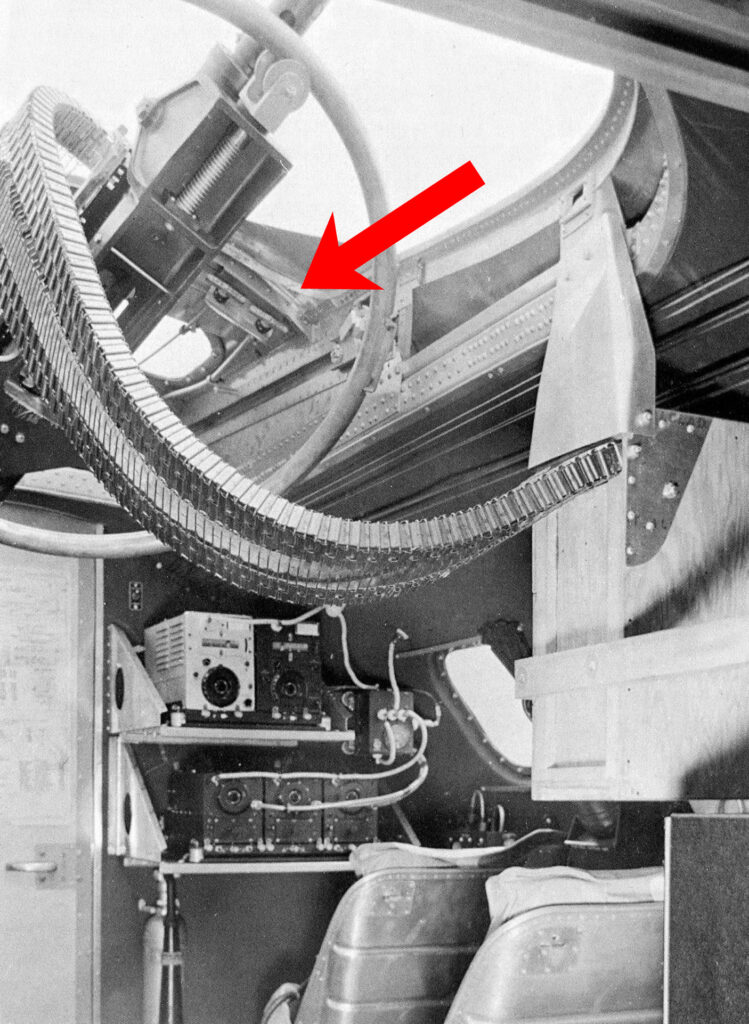
The life raft ejection bracket and T-handles are highlighted in this photo from an early B-17F.
This is likely a factory photo showcasing the trial installation of the ring style radio gun, as the black SCR-274 set, passenger chairs, and door mounted CG chart indicate that this is a somewhat older F (though still late enough to have a demand-flow oxygen system).
Note the Hughes-type ammo chute feeding the hatch gun. To properly feed this gun position, a portion of both Left and Right Hand chutes were linked together. We have a few Right Hand feed chutes but still no Lefts, so if anyone can help with this, please let us know!

A screencap from “Ditch at Sea and Live in a Boeing B-17” (TF 1-3385), showcasing the hatch for the right side life raft, mounted immediately above the bomb bay.
This aircraft was 42-6092, built by Lockheed Vega and filmed at Wright-Patterson, the current home of the National Museum of the US Air Force.
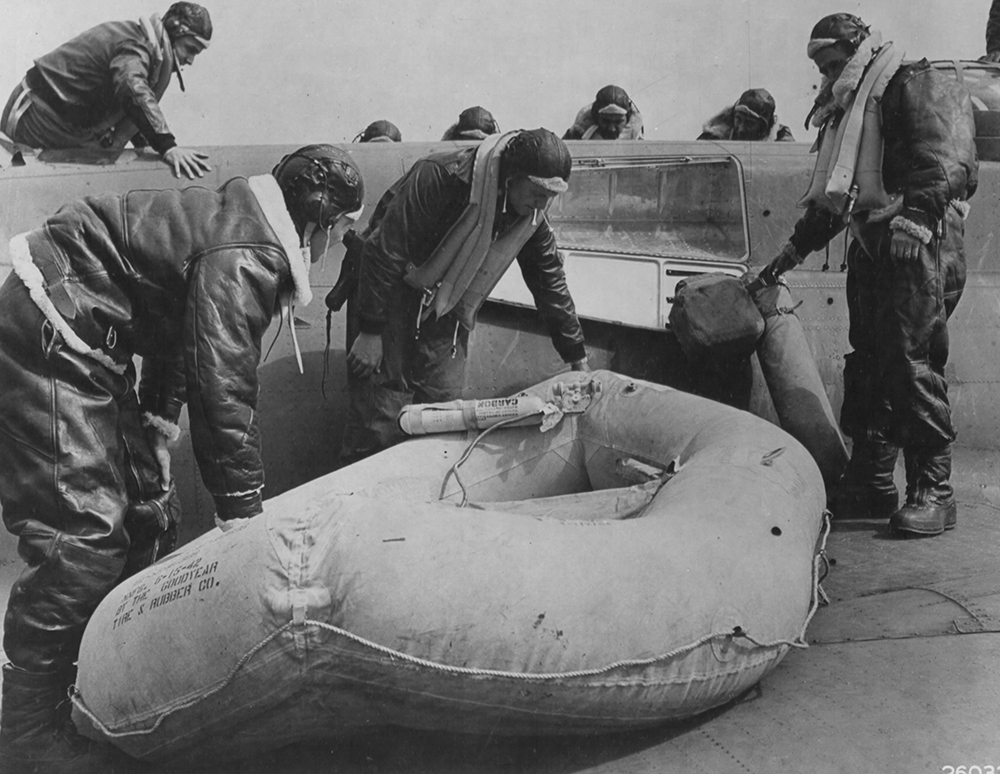
A Boeing B-17 flight crew undergoing a life boat drill. A baffle can be seen inside the life raft’s cubby, one of two which separate the compartment into thirds. The center section houses a life raft accessory kit bag.
Because this is a metal baffle, as opposed to a wooden one, it suggests that this is an older B-17.
Note the airman on the right – he is holding an older style, two-bag Gibson Girl emergency radio.
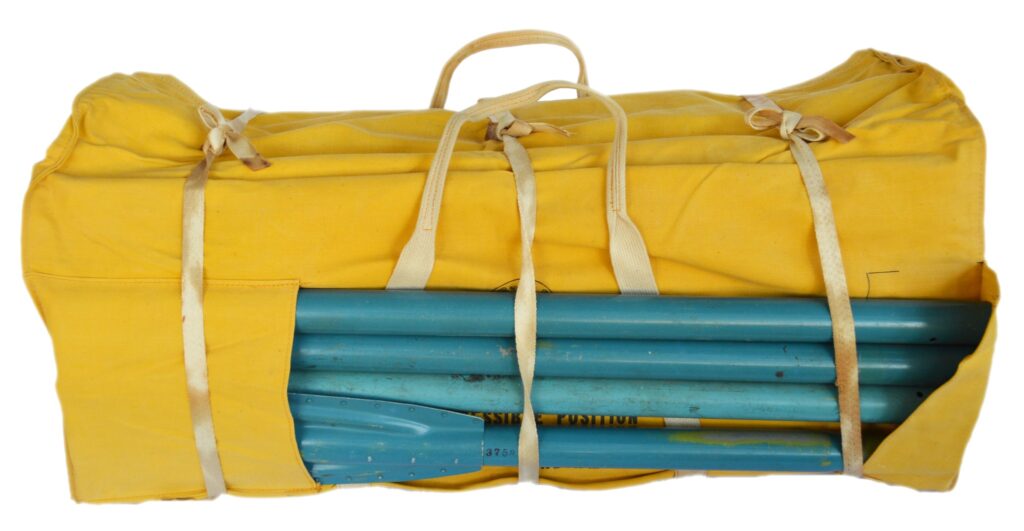
An example of a wartime life raft accessory kit bag.
Note the blue color of the oars.
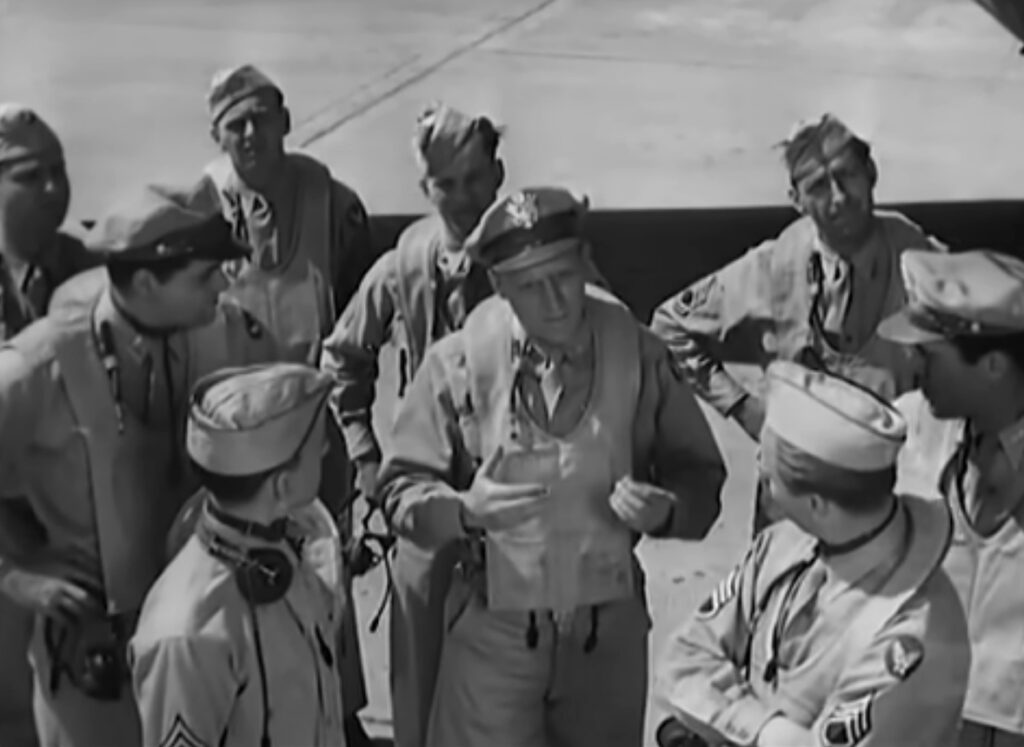
A screencap from “Ditch at Sea and Live in a Boeing B-17” (TF 1-3385) taken during the portion where actor Arthur Kennedy mentions the “two blue handles.”
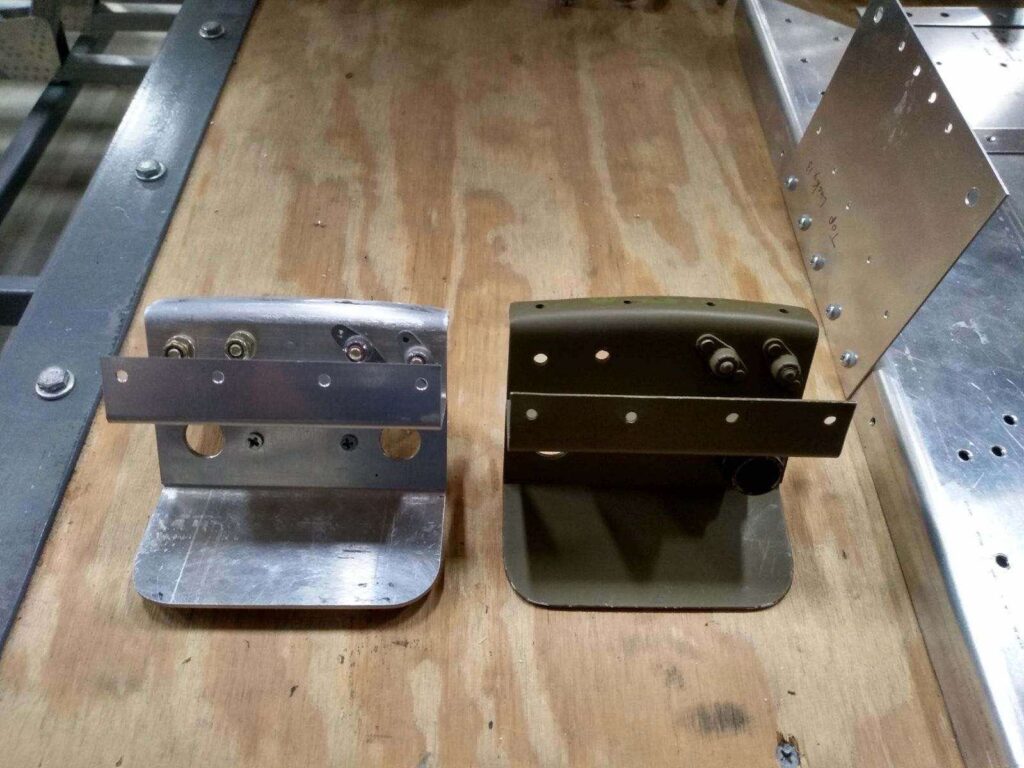
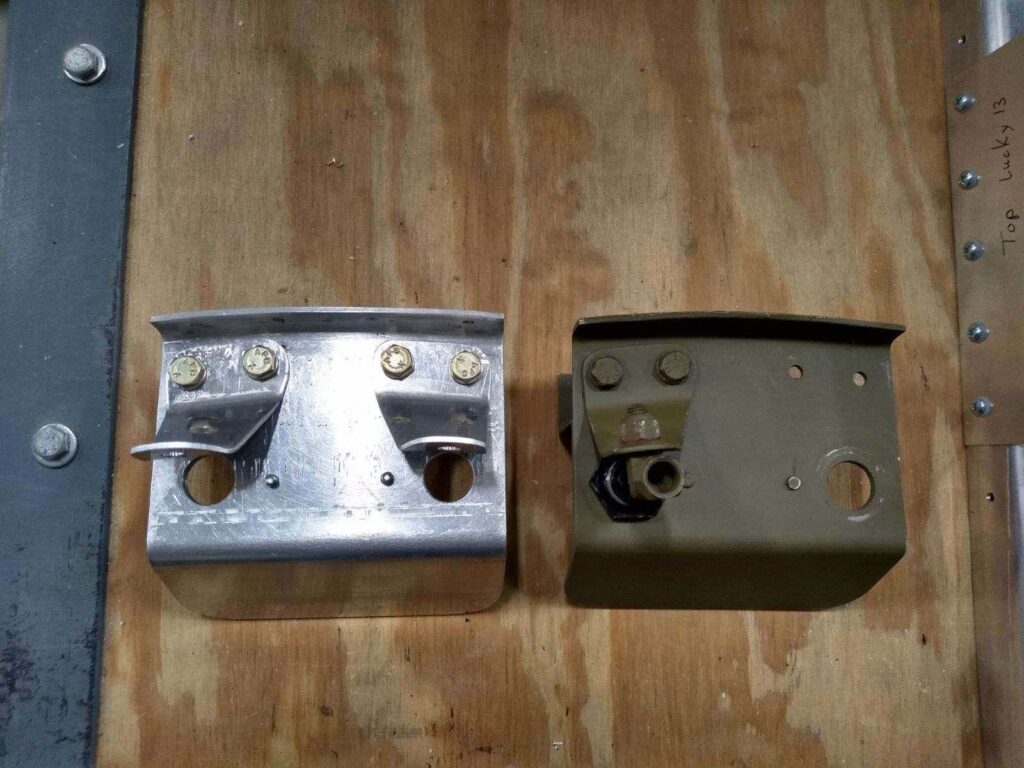
The newly recreated life raft handle bracket alongside the original example loaned to us by Planes of Fame.
Photos taken 4 November 2024.
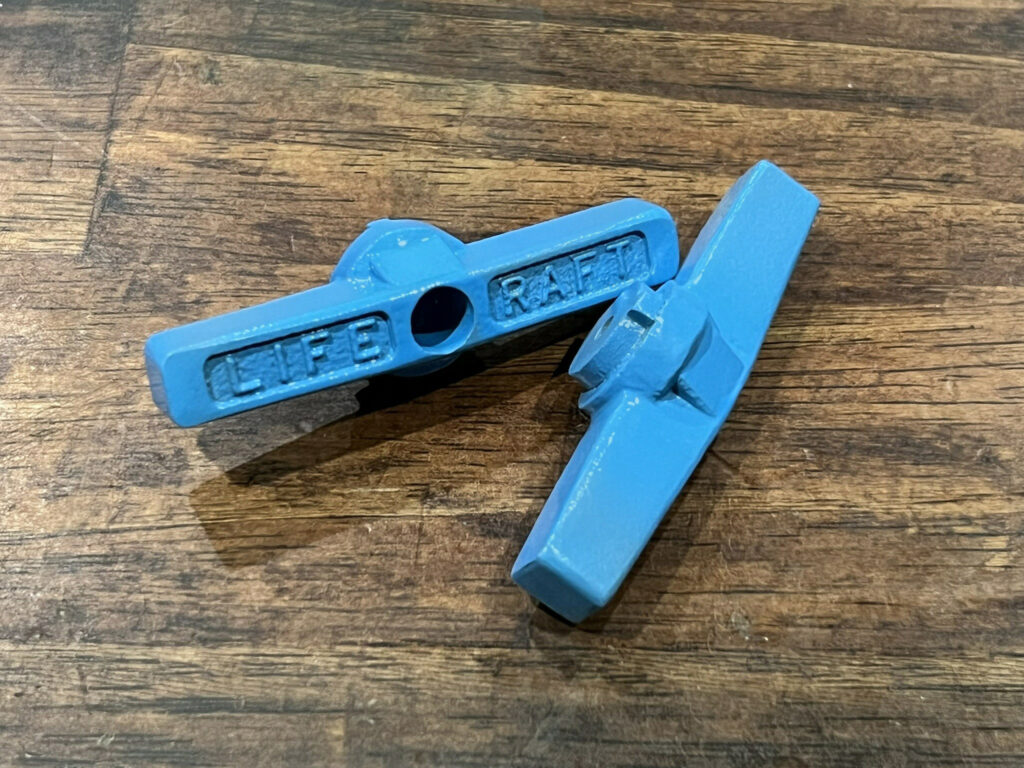
The newly finished life raft ejection T-handles for Lucky Thirteen.
Photo taken 11 November 2024.
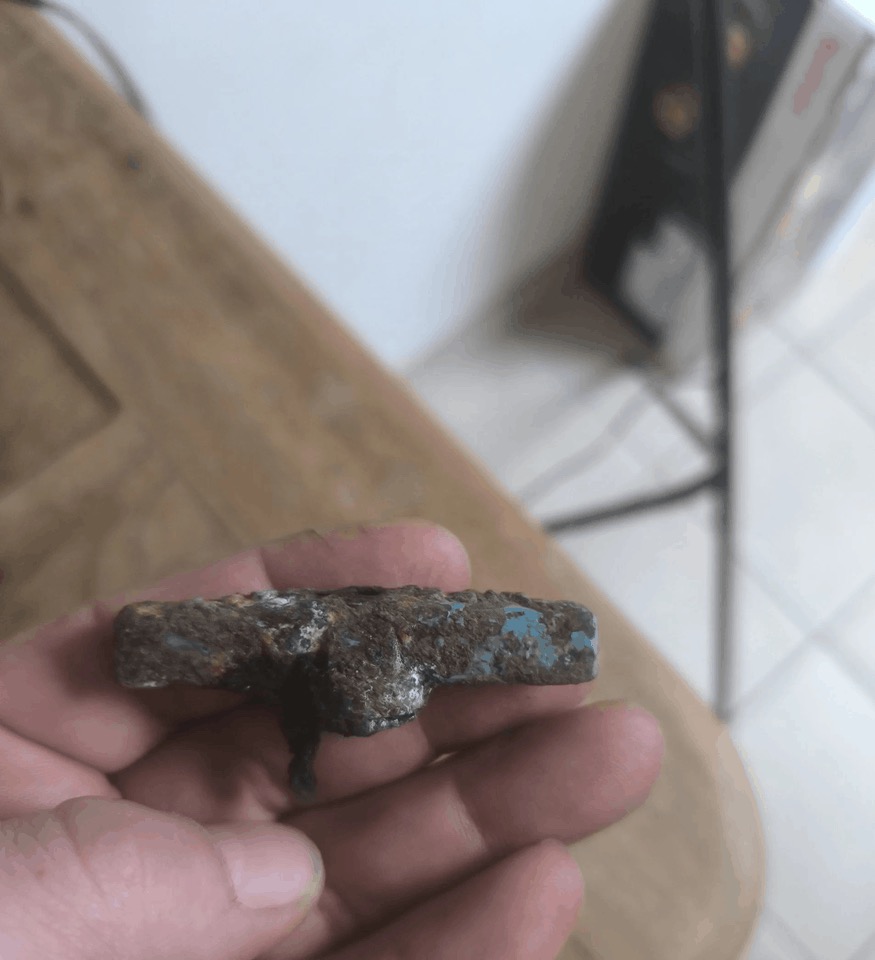
Sébastien Piton’s original life raft ejection T-handle, clearly showing the original blue color.
The other story I wanted to share involved another surprising twist of fate.
As I am sure many of you are aware, volunteer Howard Lawson is also the man behind the Virtual WWII B-17G Bomber Project, an effort to recreate the old bomber in a virtual format using the aircraft’s original blueprints. Some weeks back, Howard was researching the B-17’s hydraulic system, and in gathering references, found parts online for Lucky Thirteen. Most of them are, frankly, too expensive to purchase outright, but there were some pleasant surprises – thanks mainly to sellers who went out of their way to support us. (Thanks guys!) This is how, for example, we were able to acquire Lucky Thirteen‘s NOS hydraulic filter.
Unlike most large aircraft of her generation, the B-17 carried relatively few hydraulic systems. Mounted on Sta. 4 (the back wall of the cockpit), on the copilot’s side, were the aircraft’s reservoir and accumulator tanks. Immediately in front of them, against the right wall, sat the hydraulic control panel. This panel held the hydraulic system’s electric motor, as well as the valves powering the B-17’s brakes and cowl flaps. These were the only hydraulically powered systems on the B-17.
Howard managed to find listings for most of the off-the-shelf items named by Boeing except for one major exception – the Starbird pressure switch. So, you can imagine my surprise when accompanying Eric Miller of Project Warbird to Texas, picking up parts for Consolidated LB.30/B-24 Maid of Athens, that I was able to find a cache of these Starbird switches! C’est la vie; goes to show you never can tell.
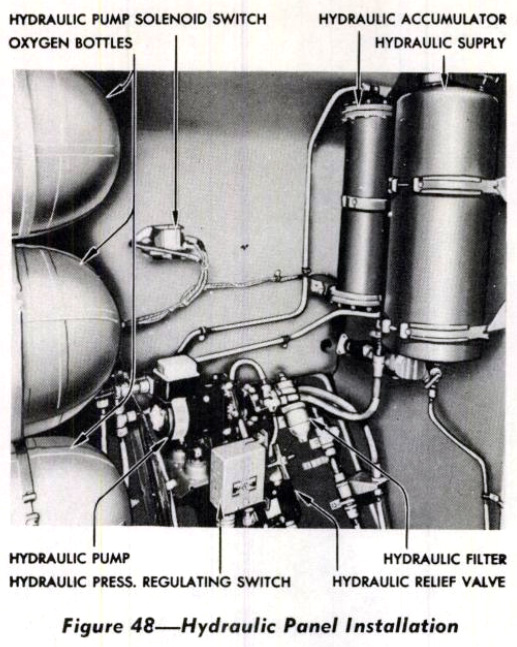
Manual illustration of the hydraulic system aboard a Boeing B-17.
Though not shown here, the aircraft’s thermos bottles were mounted in a rack immediately above the hydraulic panel. We are in need of additional volunteers skilled in metal fabrication, and the thermos rack is one such project currently stuck on the ‘Need To Do’ list. If you would interested in helping out as a volunteer, please let us know!
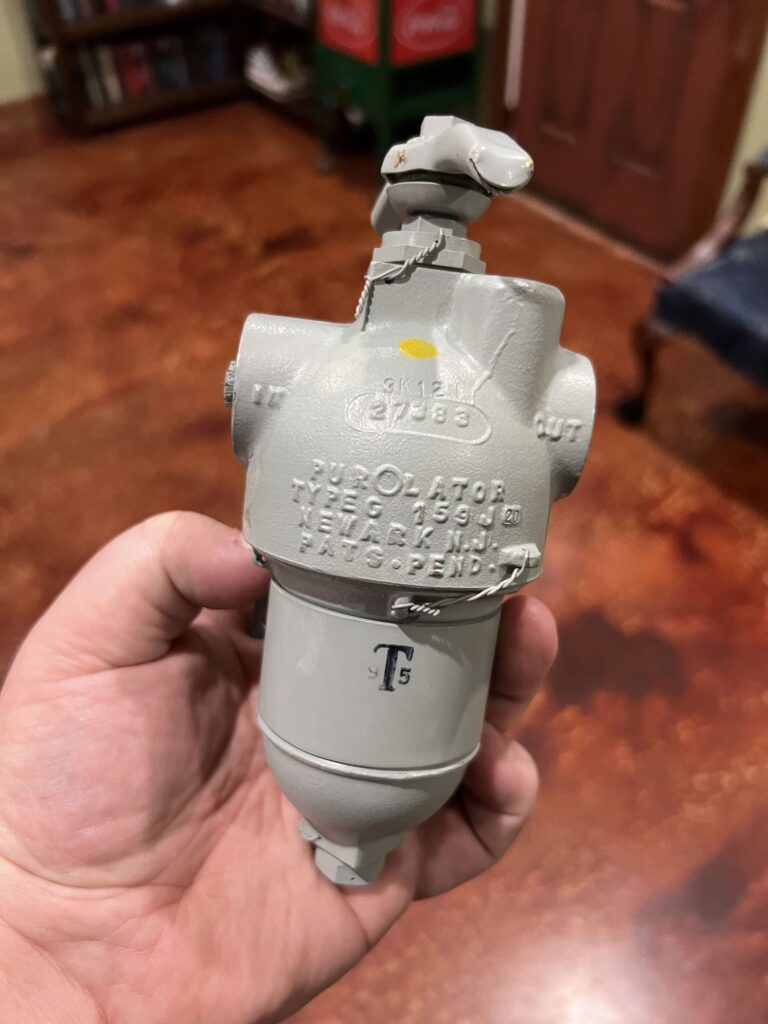
The newly-acquired hydraulic filter for Lucky Thirteen, made by Purolator of Newark, New Jersey.
Photo taken 7 November 2024.
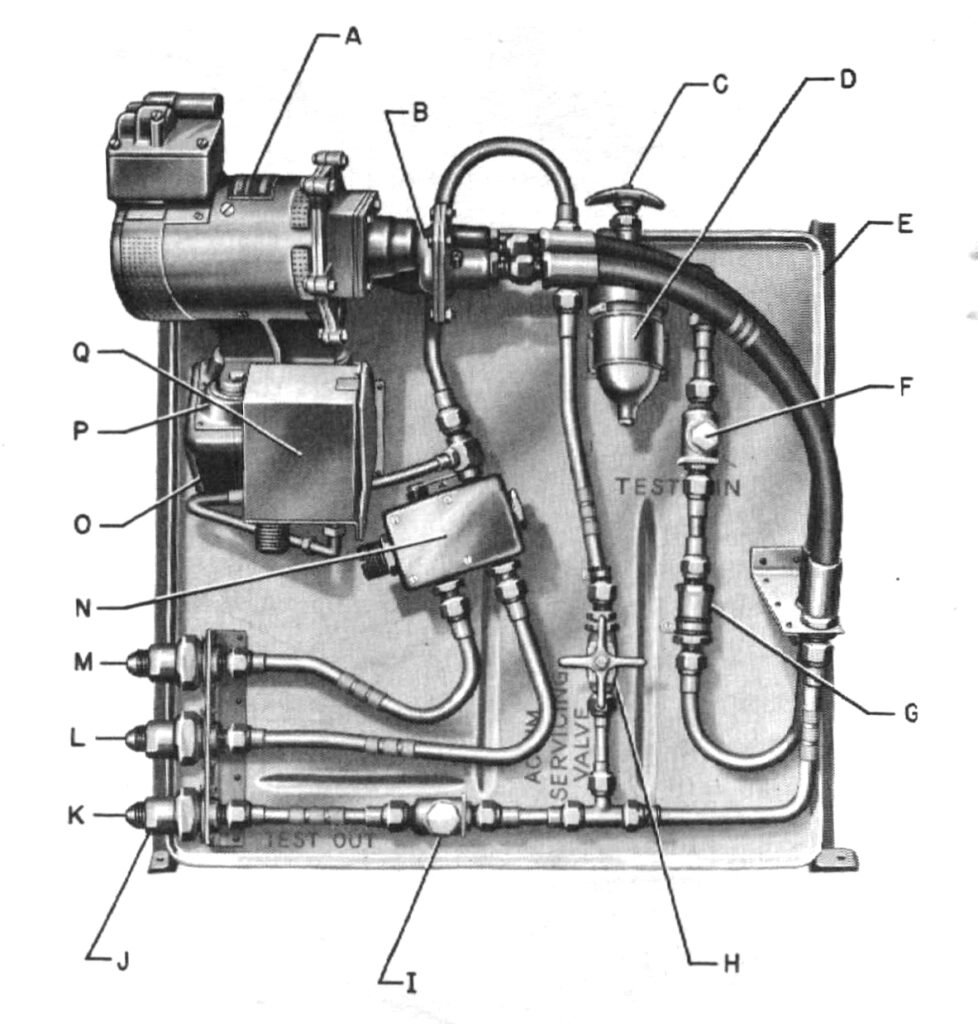
Manual illustration of the Boeing B-17’s hydraulic panel.
The reservoir tank feeds into the system via coupling (K), splitting between the pump (A), the check valve (G), and the main valve (H). The main feeds into a relief valve (N) which splits the feed between the reservoir return (M) and accumulator (L). The pressure switch (Q) is designed to permit ranges of pressure between 600 to 800 pounds per square inch.
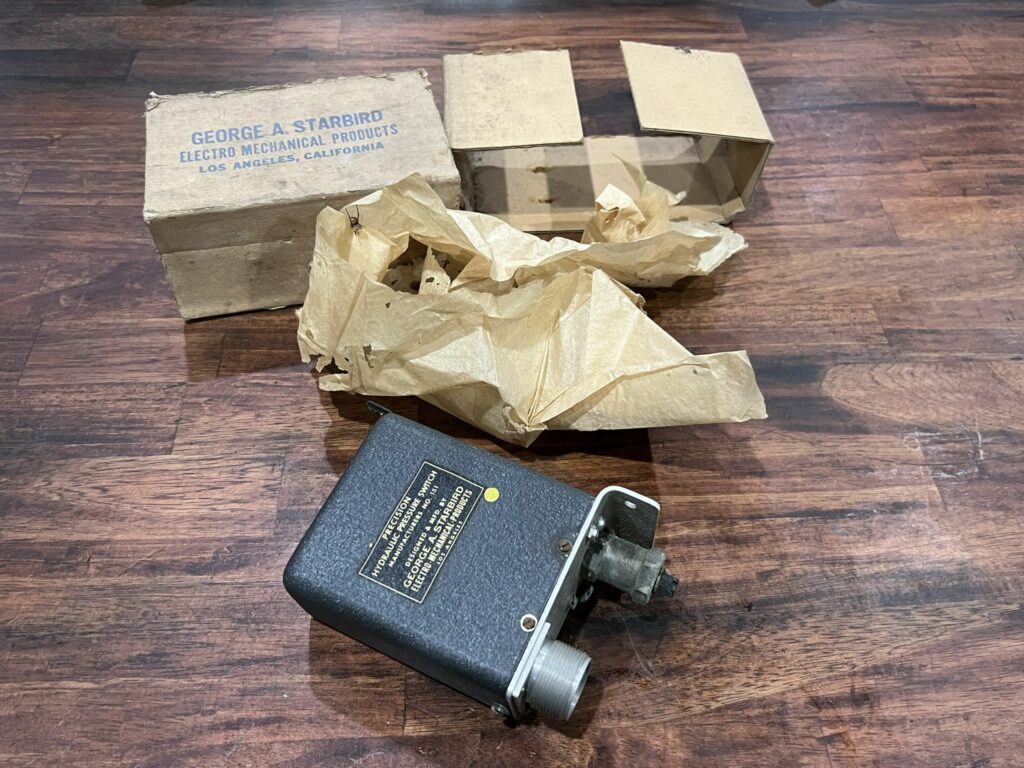
The newly-acquired Starbird pressure switch.
Photo taken 16 December 2024.
The Hangar Thirteen Foundation is a 501c3 nonprofit charity and donations toward this project are tax deductible. Donations receipts can be happily provided upon request. If you can spare a little to help, you can guarantee that you will see the results on our website and our Facebook page.
Keep the show on the road!
(384BG Motto)
